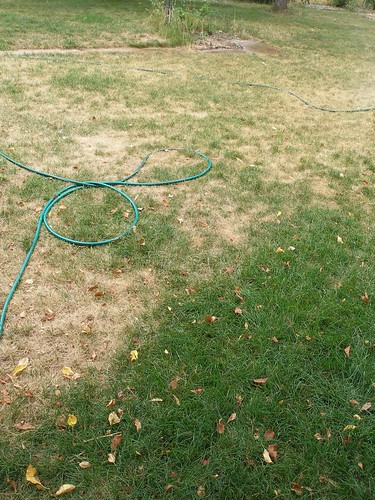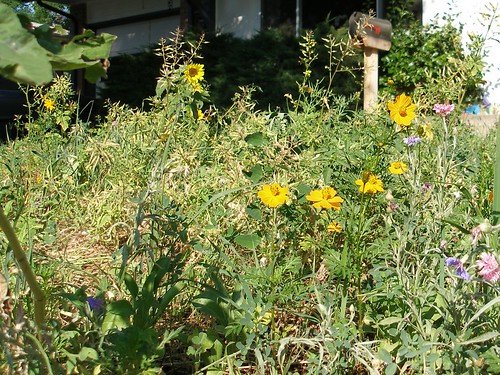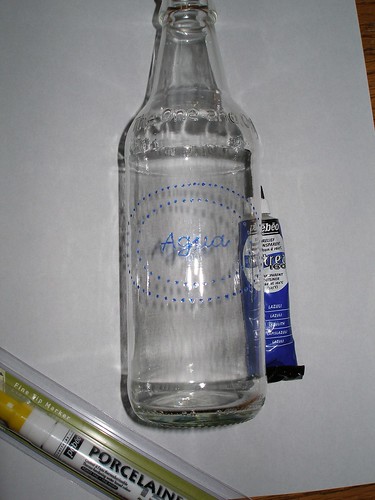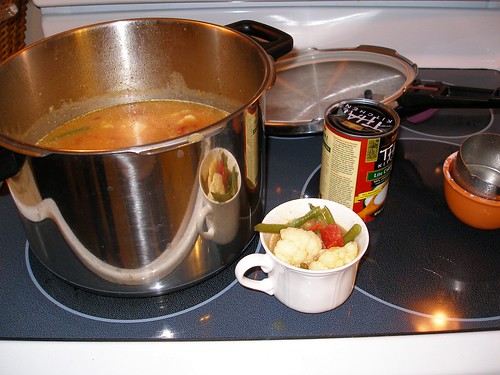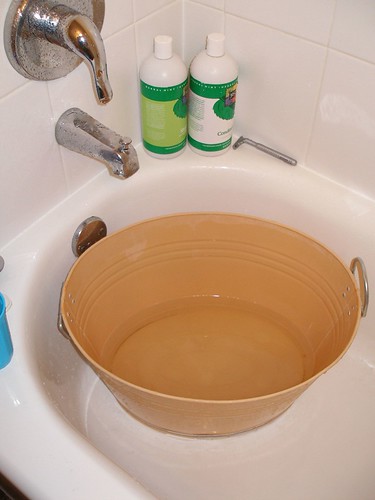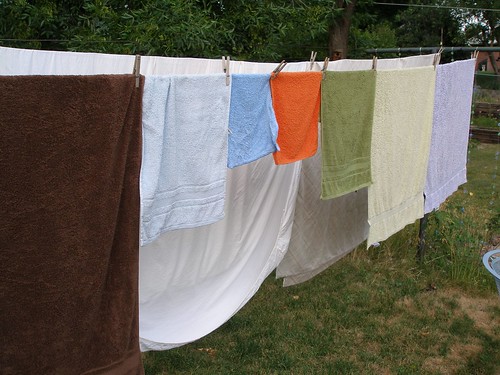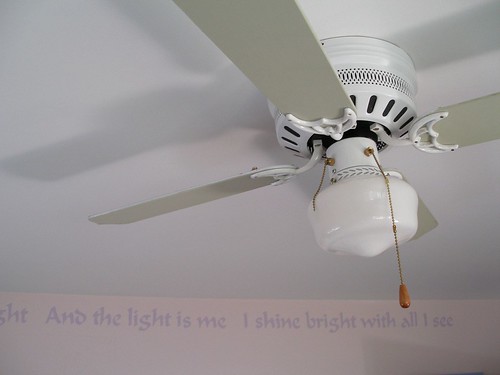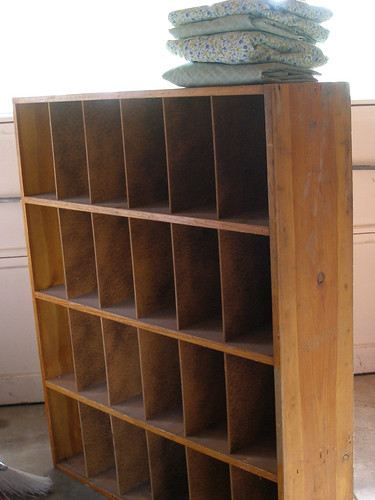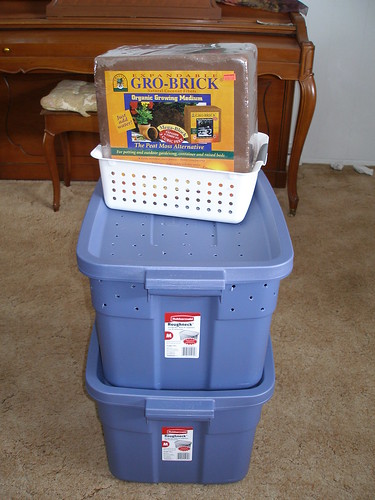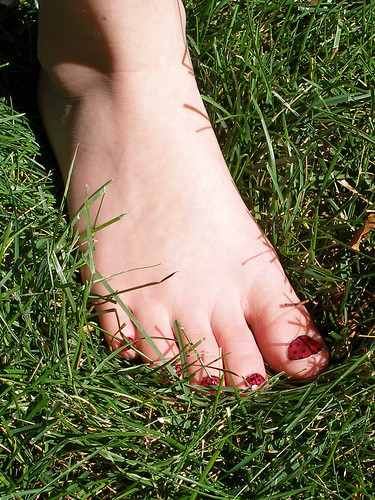When we moved into our house 3 years ago, we offered to decorate each of the kids' rooms. Kenzie chose Spongebob and picked out a screaming yellow color for the walls. I cannot believe that Jeff and I actually painted her room this color.
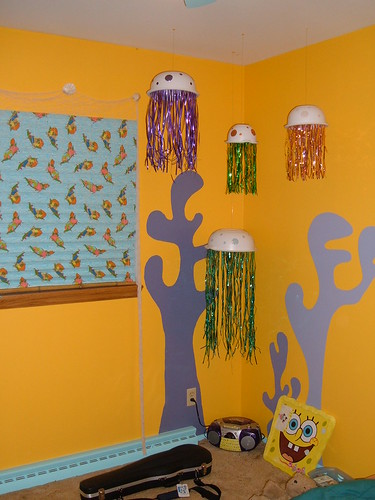
You can see more pictures of it
here. Let me just say this about Kenzie's room, it was really fun to do (painting coral, hanging jellyfish, attaching bamboo to curtains), but she outgrew it quickly. She already had been on the Spongebob kick for a year or two and was on the downhill side of it. Or maybe living in a Spongebob room helps you get over onto the downhill side. Either way, most of the yellow, as well as all of the decorations, have been covered over with music posters.
So, when it came time to do Joey's room, I was cautious. She wanted me to paint her entire room with various cartoon characters. I eventually convinced her to do characters from her picture books. I'll admit this wasn't because I was worried that she would tire of them, but that I would. This was compromise number one.
Then Joey picked pink for her room. But the pinks she picked were either the color of bubblegum or pepto bismol. I was happy with neither of them. So, I found a nice, soft, muted pink. This was both for me and for the growing up factor. Because I have learned something from the older girls. Little girls don't like pink forever. I figure that we can repaint the blue trim brown or something to make it more sophisticated (if she ever decides to grow up- which I'm OK if she doesn't). This was compromise number two.
By the way, the color of the walls really is a light pink. I've taken picture after picture of it, but it never seems to come out right.
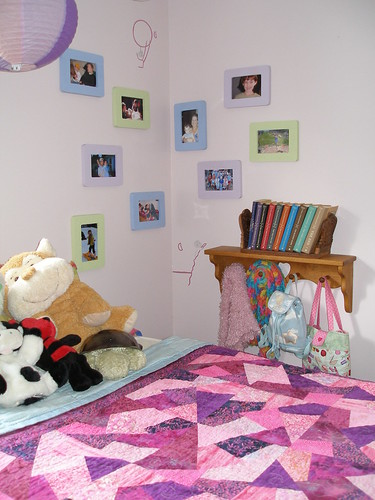
So this is a picture of the corner of her room that she sees every night and every morning. I have a book called
Feng Shui for Children's Spaces by Nancilee Wydra that describes the importance of this area. Basically, it should contain at least two pictures... one of the child surrounded by their loving family (which reminds them again and again and again how much they are loved) and the other of them doing something physically active (which helps to instill a positive body image, something that is especially important in today's culture). As you can see, we had some trouble narrowing it down. We painted the wooden frames (a buck each at Michaels) in the various colors we'd chosen for her room and I think it helps to coordinate the area.
Basically, Joey is really messy as well as a collector. She loves stuff. Really. Once I found a 9 month old collection of butterfinger wrappers, the snack size, in a pretty wooden box. She was saving them like they were jewels or something. I mention this because my overriding goal in her room is to provide places for her to keep and/or display her stuff. And to do this in a way that makes all her stuff not look as much like junk. Picking the four colors and sticking to them helps somewhat. That way when I tell her to pick out a few pictures and end up with 9, they can at least look like a collection.
Oh, and the pictures that I painted on the walls in this area are from one of my favorite books,
Harold and the Purple Crayon. Since this area is in the prosperity corner (according to Feng Shui principles) I used images that show perseverance and achieving goals in a very creative and personal way (which, BTW, is what I think that book is really about).
Anyway, the funniest part of doing Joey's room was the fact that after I had bought all the paint, moved everything out of the room and taped it all off, Joey tells me that she doesn't want me to paint her room after all. Um, too bad.
Then she admitted that it was because there was a tiny little drawing that she had done on the wall that she didn't want me to paint over. I think she didn't want to fess up that she had drawn on the wall because, historically, I haven't been too pleased with that sort of thing. Anyway, we made a compromise (number 3, if you're keeping track) so we could save the picture and still finish the project.
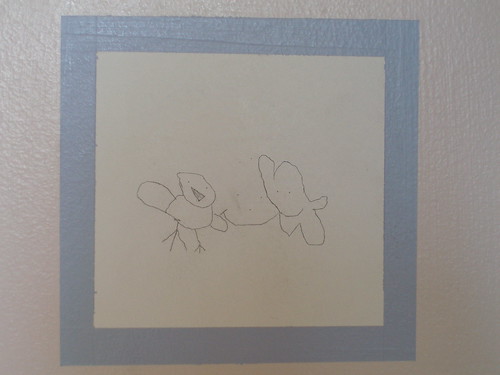
I just taped off the area and painted a nice little frame around it. Let me tell you, you gotta roll with the punches.
Besides, I was creating art all over her room; it seemed silly not to allow hers.

This is my favorite picture so far. It is the point in the Velveteen Rabbit when he is about to be burned up and starts to cry. From his one little tear grows a flower, which contains a fairy, which makes him real. We've talked about this story quite a bit, how it's good to try even if things don't work out how you think they should. It's the trying that's important.
I also think it's about how love saves us. How you've got to open yourself up (for friendship, love, whatever) and just experience it. How when you give you heart (to something or someone), it expands, creates something magical (symbolized by the fairy) and transforms you into something more real than you were before.
I think I've gone on enough about her room for now. My purpose in this post is to start the clock ticking. Because, you see, Joey picked out like 50 pictures that she wants done in her room. I've done about 13 of them and haven't worked on them all summer. I really need to get back to work on them, so I'm officially announcing to the world (or the 30 people that read my blog) that I will do them. And if you would like to see more pictures of Joey's room and what I've already done in there, click
here to see pictures on Flickr.
And one last thing, I would like to say Thank You to Courtney at
Two Straight Lines for posting all the gorgeous pictures of her daughter's nursery. What I've done here is nowhere near as sophisticated and beautiful, but we all have our different styles and seeing what she's done really reminded me that I need to finish up what I've begun here.
